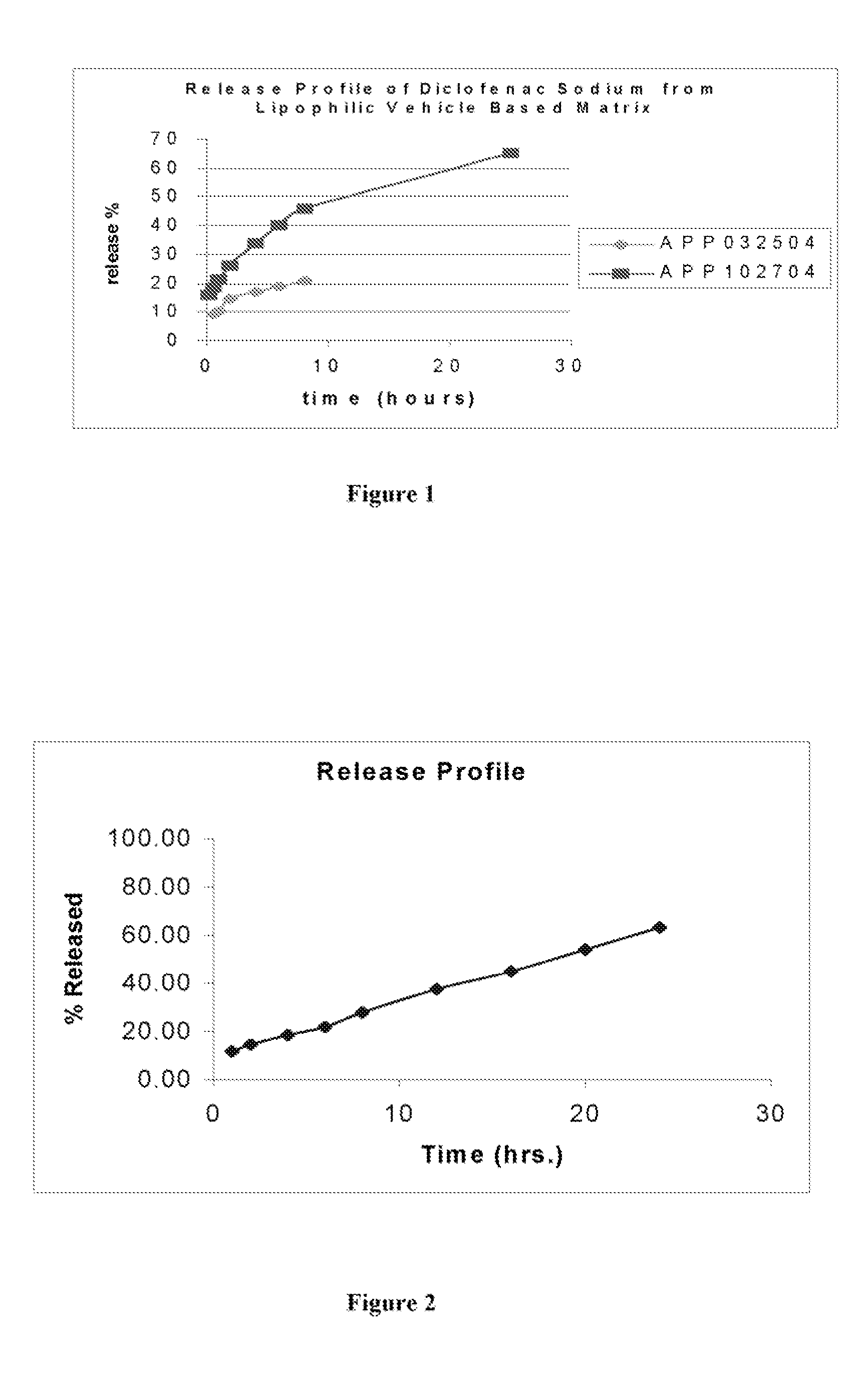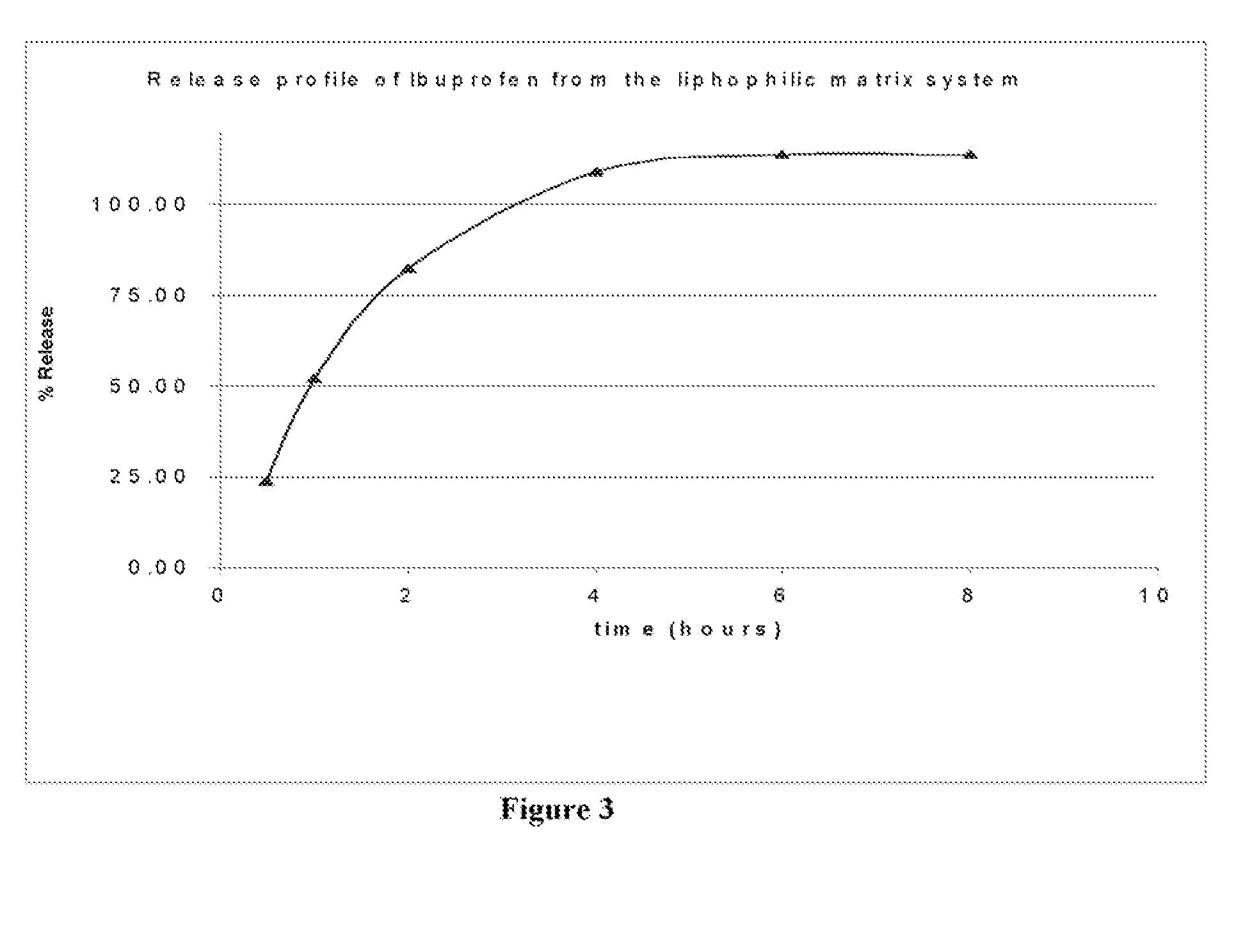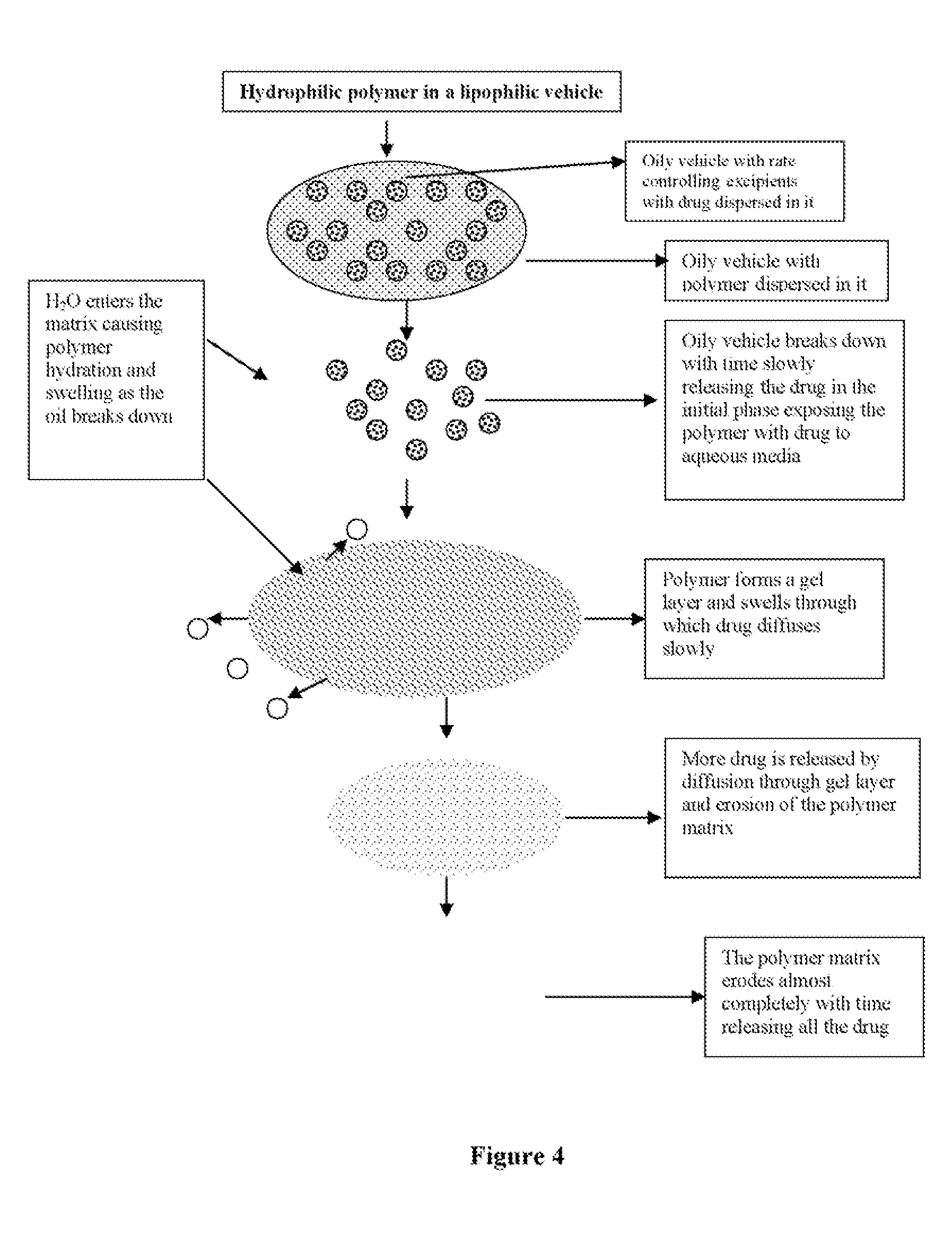Lipophilic Vehicle-Based Dual Controlled Release Matrix System
- Summary
- Abstract
- Description
- Claims
- Application Information
AI Technical Summary
Benefits of technology
Problems solved by technology
Method used
Image
Examples
example 1
Preparation of a Diclofenac Fill Formulation
[0055] A lipophilic vehicle-based dual controlled-release matrix system was prepared containing the following ingredients.
Name of the ingredient% wt.MCT68.5Glyceryl behanate2.5HPMC K4M2.5HPMC K15M1.25Aerosil 2000.25Diclofenac sodium25
[0056] Glyceryl behanate was dissolved in medium chain triglycerides (“MCT”) at about 70° C. Aerosil 200, HPMC K4M and HPMC K15M, in that order, were dispersed in the glyceryl behanate / MCT mixture with continuous mixing, just above the congealing temperature of the glyceryl behanate / MCT mixture. Suitable mixer include a propeller blade or saw toothed blade mixer or a homogenizer. Diclofenac sodium was dispersed in the above mixture and mixed until a homogeneous mass was obtained. The mass was deaerated to remove any trapped air by applying a vacuum. The mass was then encapsulated in a soft shell capsule or a liquid filled hard shell capsule. The above procedure was used to prepare the diltiazem hydrochlorid...
example 2
Alternative Diclofenac Fill Formulation
[0058] A lipophilic vehicle-based dual controlled-release matrix system was prepared containing the following ingredients.
Name of the ingredient% wt.MCT58.5Glyceryl behanate0HPMC K4M15HPMC K15M1.25Aerosil 2000.25Diclofenac sodium25
[0059] In vitro drug release studies were conducted using a USP dissolution apparatus II (paddles) at 50 rpm. The results are shown in FIG. 1. Experiments were conducted in dissolution media at a temperature of 37.0±0.5° C., for 8 hours in 6.8 phosphate buffer. Samples were periodically withdrawn and analyzed for Diclofenac sodium content using the ultraviolet (“UV”) method. The samples were analyzed at a wavelength of 276 nm.
example 3
Alternative Diclofenac Fill Formulation
[0060] A lipophilic vehicle-based dual controlled-release matrix system was prepared containing the following ingredients.
Name of the ingredient% wt.MCT58Bees wax10HPMC K4M5.75HPMC K15M1.25Aerosil 2000Diclofenac sodium25
PUM
| Property | Measurement | Unit |
|---|---|---|
| Fraction | aaaaa | aaaaa |
| Fraction | aaaaa | aaaaa |
| Time | aaaaa | aaaaa |
Abstract
Description
Claims
Application Information
 Login to View More
Login to View More - R&D
- Intellectual Property
- Life Sciences
- Materials
- Tech Scout
- Unparalleled Data Quality
- Higher Quality Content
- 60% Fewer Hallucinations
Browse by: Latest US Patents, China's latest patents, Technical Efficacy Thesaurus, Application Domain, Technology Topic, Popular Technical Reports.
© 2025 PatSnap. All rights reserved.Legal|Privacy policy|Modern Slavery Act Transparency Statement|Sitemap|About US| Contact US: help@patsnap.com



